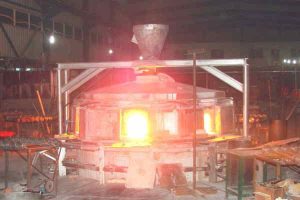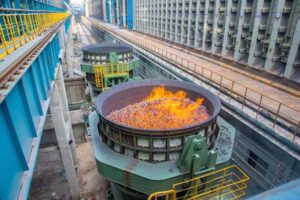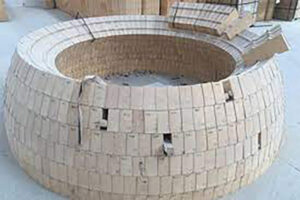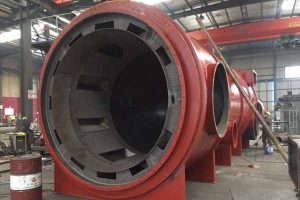The application of silica bricks in a high-hot blast furnace is divided into the roof, furnace wall, and lattice bricks, thermal conductivity is commonly used in lightweight refractory bricks, wear-resistant and durable. There are few thermal conductivity indexes for this, thermal conductivity is relatively high, at more than 1 point.
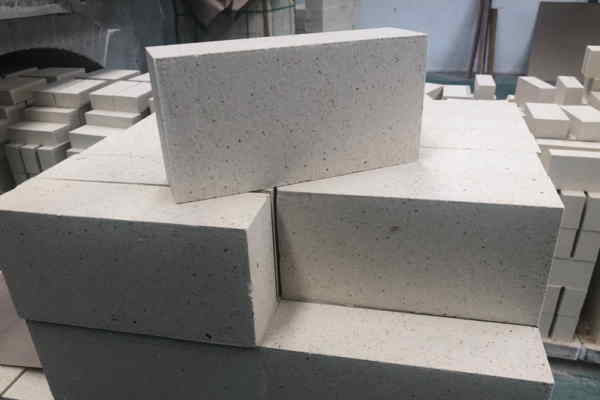
Refractory brick dense degree, phase composition changes will affect its quality heat capacity performance. Through the hot air furnace after the lattice silicon brick test results show that:
(1) The lattice silicon brick porosity is 18-22%, and the lattice brick dense degree is not reduced.
(2) The chemical composition of lattice silicon refractory bricks did not change significantly, the content of silicon oxide was 95.29%, Al2O3 content increased to 2.83% (mass fraction), CaO content was the level of the original refractory bricks (1.43% (mass fraction)). And the content of other impurities was very low
(3) Except for the transformation of the skin of the silica fire bricks from scaly quartz to square quartz, the rest of the bricks consisted of scaly quartz and a small amount of silicate phase.
(4) No distortion was found in the lattice silica bricks after use, so it can be seen that the thermal capacity of the hot blast furnace lattice silica fire bricks will not change significantly. So it is presumed that the thermal capacity of the lattice silica bricks will not be reduced.
The measured value of thermal expansion of the original refractory brick (1000℃) is 1.32%. The linear expansion coefficient of 13.5×10-6/°C is much higher than that of the used waste refractory brick with an expansion rate of 1.04% and a linear expansion coefficient of 10.6×10-6/°C. This result shows that the volume stability of the refractory bricks after use has improved.
Because the original refractory brick in the original quartz and sub-stable square quartz has been all transformed into scale quartz, lattice brick integrated specimens and white surface of the SiO2 content is similar, seemingly Al2O3 significantly increased: and Fe2O3 and K2O relatively reduced.
Performance Characteristics Of Silica Bricks For Hot Blast Furnace
Silicon bricks for hot blast furnaces are silica refractory products with scaled quartz as the main crystalline phase used in the high-temperature part of the blast furnace. Hot blast furnace with silicon brick should have the following characteristics:
(1) In long-term high-temperature and load conditions, volume stability, and high-temperature creep rate is low.
(2) 600 degrees or more good resistance to thermal shock, can adapt to the hot blast furnace temperature variability so that the brick and masonry remain intact.
(3) Good resistance to chemical erosion.
(4) Large thermal conductivity.
How to Achieve The Long-Cycle Insulation of A Silicon Brick Hot Blast Furnace?
According to the length of downtime and maintenance of parts and equipment, silica brick hot blast furnaces can be used in different insulation methods:
(1) Blast furnace within 6 days off, горячая доменная печь, and more overhaul projects, before the break in the hot blast furnace will be hot, the roof temperature can be burned to the allowed high value.
(2) Blast furnace within 10 days of a windbreak, or hot blast furnace and there are no maintenance projects. The blast furnace before the windbreak will be sent to cool the hot blast furnace. Especially if the exhaust gas temperature pressure is low, insulation during the roof temperature below 700 ℃ on the burner, you can keep the exhaust gas temperature for 10 days but 400 ℃.
(3) If it is a long time (больше, чем 10 дни) insulation. It must take the furnace roof temperature lower than 750 ℃ on the burning furnace heating.
Exhaust gas temperature is higher than 350 ℃ on the air cooling, hot air from the hot air main pipe by the backflow discharge to the atmosphere.
In order not to make the hot air flee to the blast furnace to affect the construction, build a retaining wall in the hot air pipe between the backflow rest windpipe and the blast furnace. When the top temperature of the hot blast furnace is down to 750 ℃, the forced combustion burning furnace burns again for 0.5 ~ 1.0h, and the top temperature of the furnace to 1100 ~ 1200 ℃.
When the exhaust gas temperature reaches 350 ℃ will send air cooling. The cooling air volume is about 100-300m3/min, the wind pressure is 5kPa, and the cold air is transferred from other blast furnaces or installed ventilation fans.
The operation procedure is the same as the normal working procedure of the hot blast furnace, and each hot доменная печь takes turns burning and sending air. Each shift each silica brick hot blast furnace about once to change the furnace.
This combustion plus maintain the temperature of the top of the furnace, air cooling, control the exhaust gas temperature practice known as the “combustion heating, air cooling” insulation method.
This insulation method is an effective measure of silicon brick hot blast furnace insulation. No matter how long the blast furnace downtime, this method is applicable.
A company 6 blast furnace repair a month, the silicon brick hot blast furnace uses the “combustion heating, air cooling” method, to achieve successful insulation.
10 blast furnace old and new blast furnace conversion, the shutdown period, the silicon brick hot blast furnace using “combustion heating, air cooling” method. Изоляция 138 дни, эффект очень хороший.
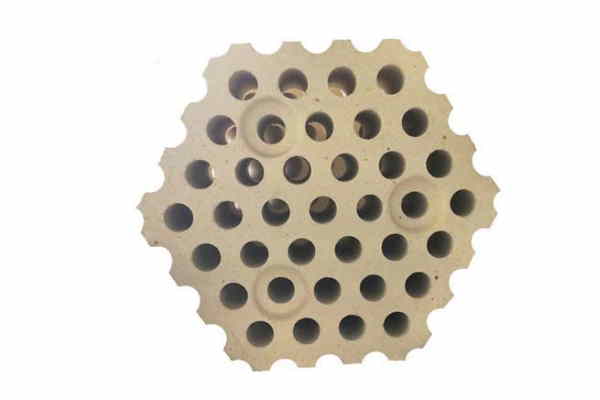
Silicon Brick Hot Blast Furnace Cooling Cool Furnace Operation Precautions Have What
(1) Cool furnace operation before the hot blast furnace is no longer burning furnace. And gradually reduce the temperature of the top of the furnace from 1350 ℃ to 900 ℃.
(2) In the cool furnace period to be strictly according to the cool furnace curve cooling. You can use the size of the dial wind volume and blast furnace release valve opening to control the total progress of the coal furnace.
Use the opening of the cold air valve of each hot blast furnace and the opening of the backflow valve to adjust the cooling speed of each hot blast furnace.
(3) In the vault according to the specified cool furnace curve continuous cooling, pay special attention to the silicon brick and clay brick (или high alumina brick) intersection of temperature changes.
If the difference with the roof temperature is too large, can be appropriate to reduce the speed of the hot blast furnace cool furnace and increase the constant temperature time.
(4) Vault temperature control. If the temperature is too high, increase the amount of air.
(5) Furnace pressure control. In the cooling process, the furnace maintains a tiny positive pressure of 98.06 Pa to prevent air other than that provided by the combustion fan to enter.
And the total airflow in the furnace is not easy to control.
To get this tiny positive pressure, pay attention to adjusting the opening of the flue valve.
Однако, note that the valve on the side with the exhaust gas temperature detection point cannot be fully closed to ensure the accuracy of the exhaust gas temperature data.
(6) The vault temperature is at 573℃, and the quartz phase change and volume expansion of silica bricks exist.
And below 500 ℃, the phase change and volume expansion phenomenon is intensified.
So special attention should be paid to the rate of temperature reduction at that stage. Prevent the violent temperature fluctuation and damage to the silica brick masonry (control within 2.0℃).
When the furnace temperature reaches below 200℃, consider stewing to naturally cool down the furnace.

